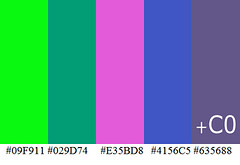Books I Could Read This Year
Books I Could Read This Year
Books
-
Men Who Made New Physics It is the story of the physicists who heralded the new era of physics.
-
Five Dollar Smile One of the early writings of Shashi Tharoor
Shashi Tharoor (Malayalam pronunciation: [ʃɐʃi t̪ɐɾuːr]; born 9 March 1956) is a senior Indian politician, author, and former diplomat. A member of the Indian National Congress, he has been representing Thiruvananthapuram, Kerala, and is a four-term Member of Parliament since 2009. He is currently the Chairman of Committee on External Affairs. He was formerly an Under-Secretary-General of the United Nations and 2006 United Nations Secretary-General selection for the post of Secretary-General in 2006. Founder-Chairman of All India Professionals Congress, he formerly served as Chairman of the Parliamentary Standing Committee on Communications and Information Technology. He has about two dozen titles to his credit and was awarded by World Economic Forum as "Global Leader of Tomorrow". , perhaps when he was in college. Stories feature subjects that occupy adolescent minds. Subjects like friendship, love, sex, and politics are dealt with in a very comical way.
-
How I Taught My Grandma and Other Stories
-
Old Man and His God Both books by Madam Sudha Murty
Sudha Murty (née Kulkarni; born 19 August 1950) is an Indian educator, author, and philanthropist. She is the Founder-Chairperson of the non-profit charitable organization Infosys Foundation. She is married to the co-founder of Infosys, N. R. Narayana Murthy. In 2024, Murty was nominated as Member of Parliament, Rajya Sabha on 8 March 2024 for her contribution to social work and education. Murty was awarded the Padma Shri, the fourth highest civilian award in India, for social work by the Government of India in 2006. In 2023, she was awarded the Padma Bhushan, the third highest civilian award in India. . Most of the stories uphold values, virtuous nature in human beings, human dignity, and many ethical and philanthropic subjects.
-
It's Not About the Bike It is all about strength and courage by the cyclist and marathoner Lance Armstrong
Lance Edward Armstrong (né Gunderson; born September 18, 1971) is an American former professional road racing cyclist. He achieved international fame for winning the Tour de France a record seven consecutive times from 1999 to 2005, but was stripped of his titles in 2012 after an investigation into doping allegations found that Armstrong used performance-enhancing drugs over his career. As a result, Armstrong is currently banned for life from all sanctioned bicycling events. , who defeated cancer to get back to racing and win the Tour de France five times.
-
Just Do It Very practical advice from Sir Richard Branson
Sir Richard Charles Nicholas Branson (born 18 July 1950) is an English business magnate who co-founded the Virgin Group in 1970, and, as of 2016, controlled five companies. . He just built the Virgin empire and encourages everyone to just do what one wants to do.
-
Bridges of Madison County A very romantic book. In fact, the best romantic book I have read so far. The writing is very good, and it is a subject that lies on the borderline of love and infidelity, but the author has dealt with it in a wonderful way that the reader can understand and sometimes agree with the borderline it portrays.
-
Guide to Earth, Moon, and Space Isaac Asimov
Isaac Asimov ( AZ-im-ov; c. January 2, 1920 – April 6, 1992) was an American writer and professor of biochemistry at Boston University. During his lifetime, Asimov was considered one of the "Big Three" science fiction writers, along with Robert A. Heinlein and Arthur C. Clarke. A prolific writer, he wrote or edited more than 500 books. He also wrote an estimated 90,000 letters and postcards. Best known for his hard science fiction, Asimov also wrote mysteries and fantasy, as well as popular science and other non-fiction. 's non-fiction writing. His writing is very lucid, and it tries to bring back the questions that a curious child wonders when standing outside and looking at the night sky. Questions like, "What are those shiny things? Why are they there? Why are they not falling? Why are so many of them there? Why is it dark now? Is the sun asleep? When we travel on a scooter, how come the moon is also traveling along with us? Can we race ahead of it?" Those are just fun and very valid questions. Asimov tries to answer them all in a way that can be understood by the child who asks those questions. The book is simply too good. I really loved it.
-
The Theory of Everything Stephen Hawking
Stephen William Hawking (8 January 1942 – 14 March 2018) was an English theoretical physicist, cosmologist, and author who was director of research at the Centre for Theoretical Cosmology at the University of Cambridge. Between 1979 and 2009, he was the Lucasian Professor of Mathematics at Cambridge, widely viewed as one of the most prestigious academic posts in the world. explains science as it evolved from the times of Galileo to string theory. It is easy to read and presented in a very concise manner.
-
Revenge of the Baby-Sat
-
Calvin and Hobbes
Calvin and Hobbes is a daily American comic strip created by cartoonist Bill Watterson that was syndicated from November 18, 1985, to December 31, 1995. Commonly described as "the last great newspaper comic", Calvin and Hobbes has enjoyed enduring popularity and influence while also attracting significant academic and philosophical interest. (1st Book) Both of them feature lovable Calvin and Hobbes adventures.
-
Asterix
Asterix (French: Astérix or Astérix le Gaulois [asteʁiks lə ɡolwa], "Asterix the Gaul"; also known as Asterix and Obelix in some adaptations or The Adventures of Asterix) is a French comic album series about a Gaulish village which, thanks to a magic potion that enhances strength, resists the forces of Julius Caesar's Roman Republic Army in a nonhistorical telling of the time after the Gallic Wars. Many adventures take the titular hero Asterix and his friend Obelix to Rome and beyond. Series
- Asterix the Gaul
- Asterix and the Golden Sickle
- Asterix and the Goths
- Asterix and the Chieftain's Shield
- The Mansions of the Gods
- Asterix and the Soothsayer
- Asterix and Caesar's Gift
-
Fantastic Voyage Asimov's fiction, which is, in fact, based on the screenplay of a movie by the same name. The book came much earlier than the movie. Three men and a woman miniaturize themselves and enter inside the human body in a miniaturized submarine to perform an operation. They must complete the operation and get out of the body within a time limit; otherwise, even as their goal fails, everyone stands in danger of losing something very valuable—the information available with the person they are trying to save at any cost. Asimov has taken care to write fiction in a very logical way. For example, the team experiences "Brownian Motion" as they enter inside the body.
-
Out of My Comfort Zone Steve Waugh
Stephen Rodger Waugh (born 2 June 1965) is an Australian former international cricketer and twin brother of cricketer Mark Waugh. A right-handed batsman and a medium-pace bowler, Waugh is considered one of the greatest cricketers of all time. Waugh was a part of the Australian team that won their first world title during the 1987 Cricket World Cup. As Australian captain from 1997 to 2004, he led Australia to fifteen of their record sixteen consecutive Test wins, and to victory in the 1999 Cricket World Cup. Waugh is considered the most successful Test captain in history with 41 victories and a winning ratio of 72%. 's biography. While reading this, I had many fits of laughter, moments of amusement, and wonder at this simple guy with a lot of character. Steve is definitely one of my favorite sportspeople. He is very plain and direct and a very bold person too, as we can see in his autobiography. Good lessons on leadership and management are presented in his book.
-
Krishna and Gopal
-
Savitri
-
Buddhist Tales From the Amar Chitra Katha
Amar Chitra Katha (ACK Comics) is an Indian comic book publisher, based in Mumbai, India. The company was founded in 1967 by Anant Pai. Most of its comics are based on religious legends and epics, historical figures and biographies, folktales and cultural stories. series, based on folklore, mythology, and ancient Indian stories. They deal with moral values, justice, ethical leadership, and administration. I have more Amar Chitra Katha books to read.
-
The Hound of the Baskervilles
-
The Sign of Four
-
A Study in Scarlet These showcase the brilliance of Sir Arthur Conan Doyle
Sir Arthur Ignatius Conan Doyle (22 May 1859 – 7 July 1930) was a British writer and physician. He created the character Sherlock Holmes in 1887 for A Study in Scarlet, the first of four novels and fifty-six short stories about Holmes and Dr. Watson. The Sherlock Holmes stories are milestones in the field of crime fiction. through Sherlock Holmes
Sherlock Holmes () is a fictional detective created by British author Arthur Conan Doyle. Referring to himself as a "consulting detective" in his stories, Holmes is known for his proficiency with observation, deduction, forensic science and logical reasoning that borders on the fantastic, which he employs when investigating cases for a wide variety of clients, including Scotland Yard. and Dr. Watson. I read these for the second time, as I had completed the Sherlock Holmes series a long time back.
Many of these books, like Guide to Earth, Moon, and Space, The Theory of Everything, and the Sherlock Holmes series, I read along with my friend Avinash, and we both enjoyed them together.
Technical Books
Apart from these, there are a few technical books I could lay my hands upon. Note, technical books are not meant to be read; they are to be studied thoroughly and worked upon a number of times. So, I cannot put them in the "read" category.
I could get a chance to work with: - Version Control with Subversion by Ben Collins-Sussman, Brian W. Fitzpatrick, and C. Michael Pilato - Word Power Made Easy by Norman Lewis - Cryptography and Network Security by William Stallings
Final Thoughts
My friend and I had thought at the start of the year to compete for the 50 Book Challenge. While that was my list of books, I am glad that we got started, and next year, I plan to read at least 50 books.
Let me know if you would like to read any of these books; I would be glad to share them with you. You can also have a peek into my online library at books.google.com.
Happy New Year 2008 to all!
Good list of books.If you have time watch the movie "Bridges of Madison Country".It starrs Clint Eastwood
Anonymous
Great Post this time, i have seen quality of books you read.The Buddhist tales from amar chitra Katha Books made me to think about it, as i have not been through it.I like the ack series the much.
geet_jain











